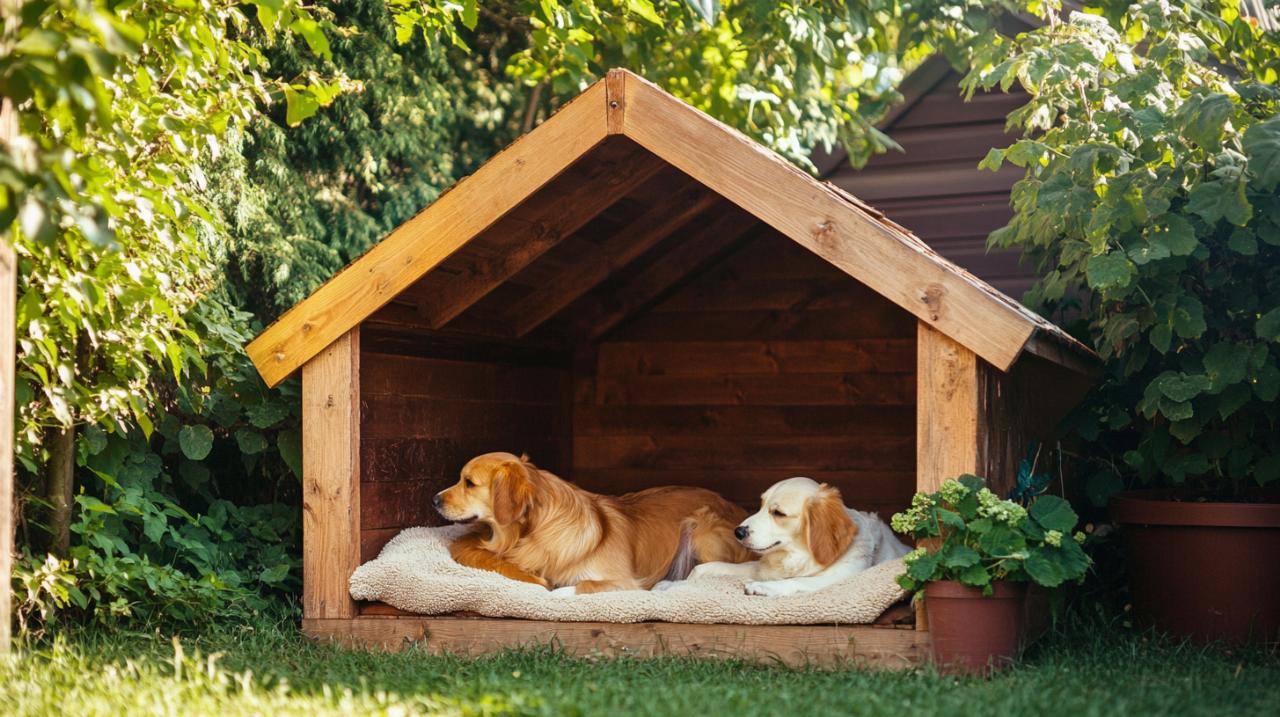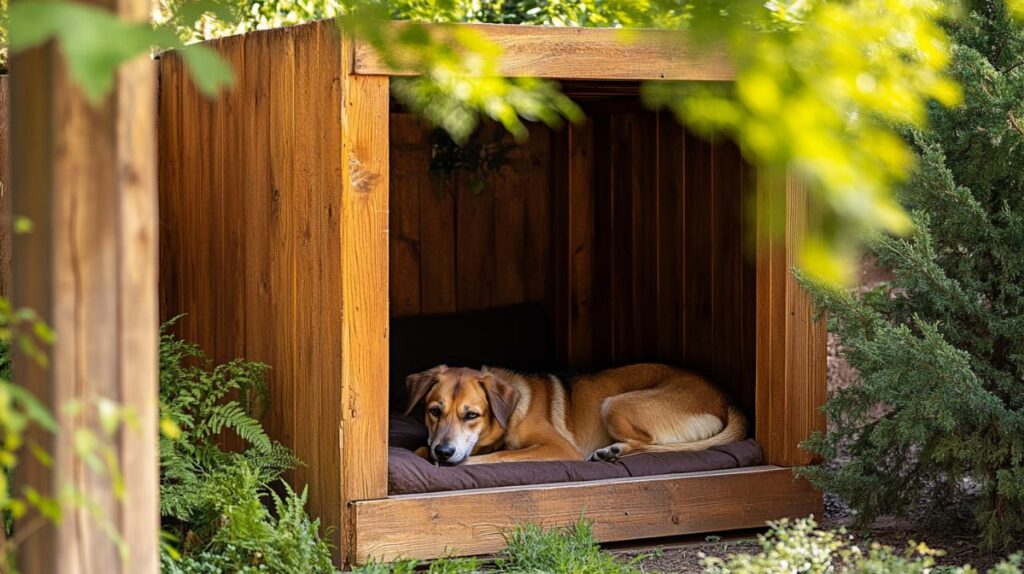Creating a comfortable and secure environment for your furry friend is one of the most rewarding aspects of pet ownership. Whether you have a single dog or multiple companions, ensuring they have a proper space to retreat to can significantly enhance their overall well-being. This guide will walk you through the essential steps and considerations for building a practical and welcoming shelter that suits your pet's needs and your backyard.
Planning and designing your dog shelter
Before you pick up a hammer or saw, it is essential to spend time thinking through the design and planning stage. This phase is where you lay the groundwork for a shelter that will not only protect your dog from the elements but also provide a cosy environment where they feel safe and content. When considering a diy dog shelter solution, careful planning ensures that the final structure meets both practical and aesthetic requirements while keeping your pet's comfort at the forefront.
Choosing the Right Location and Materials for Your Kennel
The location of your dog shelter plays a vital role in its effectiveness. Positioning the structure in a spot that offers wind protection and moderate sunlight can make a significant difference in your pet's comfort throughout the year. Elevating the structure slightly off the ground is a wise choice, as it prevents water accumulation during heavy rain and improves air circulation, which helps keep the interior dry and fresh. The area should also be away from high foot traffic zones, allowing your dog to enjoy a quiet and peaceful resting place without constant disturbances.
When it comes to materials, there are several options to consider. Wood remains a popular choice due to its excellent thermal insulation properties and traditional appearance. It creates a warm and inviting space, especially during colder months. However, wood does require regular maintenance to protect it from weathering and decay. On the other hand, durable plastic is increasingly favoured for its ease of cleaning and weather resistance. Plastic kennels require minimal upkeep and are highly practical for owners who prefer a low-maintenance solution. For the roof, bitumen offers superior protection against rain, snow, and sun, ensuring that the shelter remains dry and comfortable regardless of the British weather.
Measuring Your Dog and Determining the Proper Shelter Size
Getting the size right is crucial for your dog's comfort and health. A shelter that is too small will feel cramped and uncomfortable, while one that is excessively large may not retain warmth effectively. To determine the proper dimensions, measure your dog from nose to tail and from the ground to the top of their head when standing. Adding at least twenty percent more space is recommended, particularly for medium and large breeds, to allow room for movement and stretching.
If you are considering a double kennel for multiple dogs, it is important to measure each dog individually and then factor in additional space to accommodate both pets comfortably. Shared spaces not only promote socialisation but also strengthen bonds between dogs. Moreover, shared kennels can offer thermal benefits, as body heat helps maintain a warmer temperature during chilly evenings. Ensuring that each dog has enough room to move freely and access to their own area within the shared space is essential to prevent any potential conflicts over resources.
Building and weatherproofing your dog house
Once you have finalised your design and gathered your materials, the construction phase can begin. Building a sturdy and weatherproof dog house requires attention to detail and a methodical approach. The goal is to create a structure that can withstand the variable British weather while providing a warm, dry, and draught-free environment for your pet.
Step-by-Step Construction Guide for a Sturdy Dog Shelter
Start by constructing a solid base, ideally elevated on bricks or wooden blocks to keep the floor off the ground. This elevation not only prevents moisture from seeping in but also improves ventilation beneath the structure. Cut your chosen material to the required dimensions, ensuring that all pieces fit together snugly. If you are using wood, sand down any rough edges to prevent splinters and ensure a smooth finish.
Assemble the walls by joining the panels securely, using screws or nails appropriate for outdoor use. It is advisable to reinforce the corners with brackets to add extra stability. For the roof, an A-frame or slanted design works well, as it allows rainwater to run off easily. If you opt for a removable roof, this will make future cleaning much more convenient. Install the roof securely, ensuring there are no gaps where water could penetrate.
The entrance is another important consideration. An arched door is ideal for larger dogs, while a flap door made from rubber or plastic can help keep out drafts and retain warmth. Some owners prefer a curtain door made from lighter material, which is particularly suitable for smaller breeds. Whichever style you choose, make sure the opening is large enough for your dog to enter and exit comfortably without having to squeeze through.

Insulating and Protecting Your Kennel from the British Weather
Weatherproofing is essential to ensure your dog shelter remains a cosy environment throughout the year. Insulation is key to keeping the interior warm during winter and cool during summer. Adding blankets or foam panels to the walls can provide excellent soundproofing and thermal insulation. If you are building a wooden kennel, consider lining the interior with plywood or another insulating material before adding a layer of fabric or cushioning.
Using non-toxic paint on the exterior not only enhances the appearance of the shelter but also provides an extra layer of protection against the elements. Light colours are recommended for warmer climates as they reflect heat, while dark colours can help absorb warmth in colder regions. Ensure that all paint and varnish are fully dried before allowing your dog to use the shelter.
Ventilation is another crucial factor. Proper air circulation prevents the build-up of moisture and odours, which can lead to an uncomfortable environment. Small vents near the roof or gaps between panels can provide sufficient airflow without creating drafts. Close curtains or add extra blankets during particularly cold or stormy weather to enhance cosiness and soundproofing, especially during disruptive events such as fireworks.
For those who prefer a more portable solution, an outdoor dog tent can be a practical alternative. These structures are designed to protect your pet from sun and rain while being easy to set up and move as needed. Regardless of the design you choose, the ultimate goal is to create a safe space where your dog can retreat when feeling anxious or overwhelmed. Access to fresh water should always be provided nearby, and the shelter should be free from any hazards that could cause injury.
Investing time and effort into building a diy dog shelter solution not only benefits your pet but also offers you the satisfaction of creating something tailored specifically to their needs. Whether you opt for a simple pallet construction or a more elaborate log cabin design, the key is to focus on durability, comfort, and weather resistance. By following these guidelines and considering your dog's individual requirements, you can build a shelter that will serve as a cherished resting place for years to come.

